It is fairly easy to use a wet vacuum to unclog a drain if you have used a dry vacuum to clean your house. It works in the same way as a plunger but with much higher power and suction. This article will talk in detail about using a wet vacuum to unclog your drain.
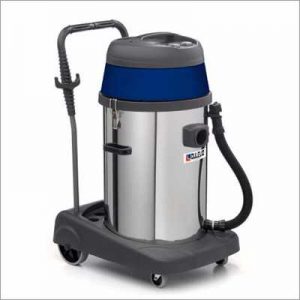 You don’t need to own one to use it. There are lots of equipment rental centers and hardware stores where you can rent one. Once you have the right wet vacuum, here are the steps that you need to follow.
You don’t need to own one to use it. There are lots of equipment rental centers and hardware stores where you can rent one. Once you have the right wet vacuum, here are the steps that you need to follow.
Note: It’s helpful to use some ear protection like ear plugs or ear muffs for this operation. Wet vacuums make a lot of noise. No use damaging your hearing while you unclog your drain.
Steps To Unclog a Drain Using a Wet Vacuum:
Step 1: Connect the vacuum in the room to a power supply. Cover the area around the drain with towels and have a bucket handy. The clog and water inside the drain will splash out while you’re vacuuming. It is especially important to cover the area with towels after using a chemical drain cleaner.
Step 2: Remove any drain ring or screen from the drain hole. Insert the hose of the vacuum into the drain hole and try pulling it in and out of the hole, without switching on the machine. Figure out where to stand and how to hold the vacuum nozzle before you actually start vacuuming.
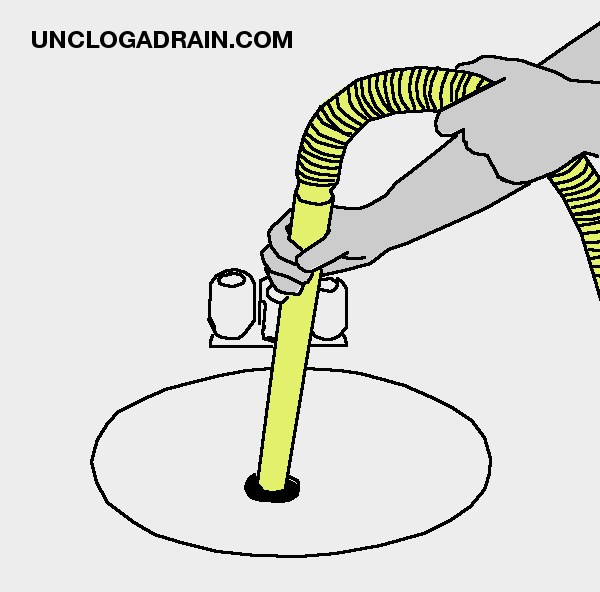
Step 3: Connect the hose to the input fitting in the vacuum and feed the other end into the drain. Remove all loose accessories and small items around you. (You don’t want to accidentally suck up something expensive as you’re inserting or removing the nozzle.)
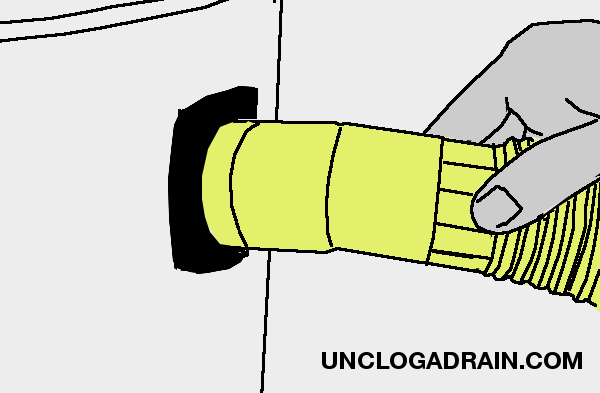
Step 4: Before inserting the hose into the drain, switch on the machine. Wet vacuums make a high-pitched loud whine so be prepared! (Did we say hearing protection is a good idea?)
Step 5: Insert the hose into the drain hole and start feeding it down the drain. When the motor sound changes distinctively, it indicates the vacuum is sucking the clog out. Wait for the sound to get back to the original high pitch whine. This will indicate that the clog is removed and made its way into the vacuum catch tank. You will probably see the tail of the clog sticking out of the hose as you pull it out of the drain.
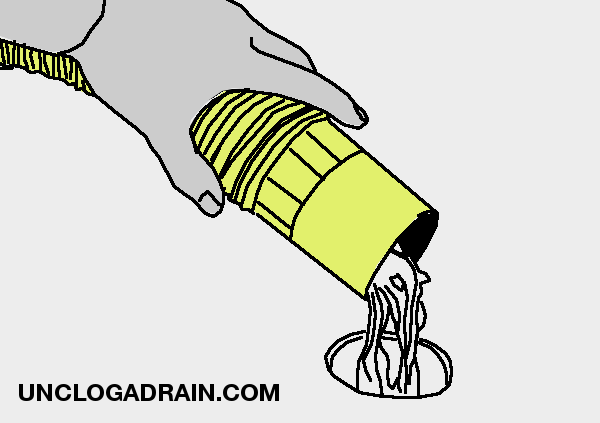
But what if the clog gets stuck?
If it takes a long time for the vacuum to get back to its original high pitch sound, this means the clog isn’t getting pulled out of the drain and up through the hose. Many clogs will stretch out and get stuck in the pipe as hair and other debris keep it together.
Switch off the machine for a few minutes to let the vacuum motor cool and then restart it and continue. Sucking against a clog at high speed for a long time can cause damage to the vacuuum. So you want to give the motor a rest. Also, when the vacuum stops pulling the clog can fall back and get unstuck if it’s hung up on a corner in the pipe.
If still there is no change in the sound after you try again, move the hose in and out of the drain like a plunger. Moving the hose up and down will help pull and release the clog from the inside of the drain pipe.
What if you’ve tried everything, but still no luck? At this point it’s best to physically pull the clog out. You can start with a straightened coat hangar with a small hook bent into the end. This will grab the hairs and stringy debris in the clog and pull it out. Be careful and gentle here — you don’t want to lose the coat hangar down the drain or damage your pipes.
If all else fails, you will need to use a snake or drain auger. This usually means the clog is too far down the drain to reach with other methods.
Step 6: If dirty water splashes out of the drain, clean it up with towels. This will keep things relatively sanitary and avoid a slip and fall. That’s why we said to lay down towels at the beginning, remember?
Step 7: Once the clog is removed, remove the hose slowly. Fast movement can crack the drain pipe if it’s PVC plastic. A cracked drain pipe will not work, and you’ll have to hire a plumber or do a big DIY job to fix it.
Step 8: The clog and most of the dirty water will be collected inside the canister in the wet vacuum. Empty the liquid from the canister into a large sewer drain. Then scoop or dump the clog material out and throw it in the trash. Do not flush it down a toilet or back into the same drain again!
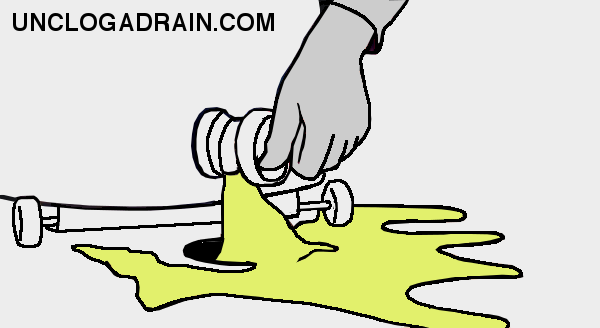
Step 9: Boil a small pot of water and pour it down the drain to clear out any remaining gunk that the vacuum didn’t pull out.
Simple Things to Know Before Using a Wet Vacuum to Unclog a Drain
- Wet vacuums are powerful and should not be used by children.
- You should not do this too frequently. You could end up damaging your pipes. Start with liquid drain cleaning solution first. A wet vacuum is the next step when drain cleaner solutions don’t work.
- Do not use this method within eight hours after using a chemical drain cleaner. Chemical drain cleaners can harm your skin, eyes and lungs and potentially damage the wet vacuum hose and motor seals.
- If you removed the clean-out plug in your floor drain, don’t forget to replace it. Otherwise, the gas from the sewer will enter your drain and back up into your house, basement or building. If it is a cork style plug, you can find a plastic replacement from any hardware store.
If you are not sure about using a wet vacuum machine, it is always better to hire a professional. This will save you from damaging your pipes due to manual error.
- Also Read: Our Best Drain Cleaner Reviews
- Resource: Drain Cleaning Tools List